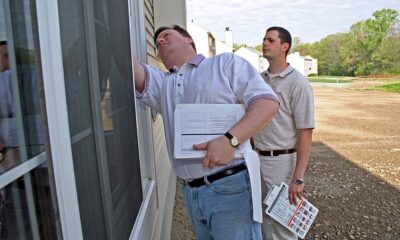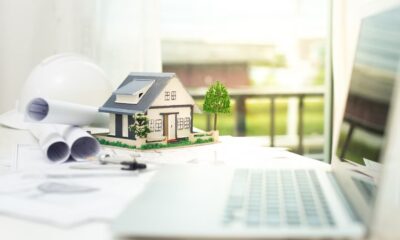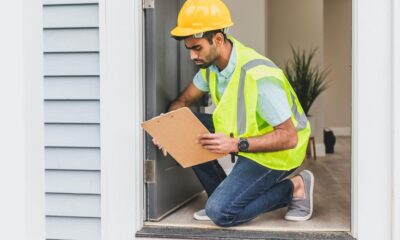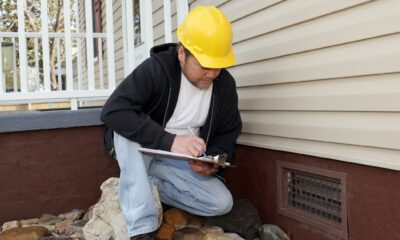HOME IMPROVEMENT
Tips from an Arizona Property Inspections

Whether buying a new home, selling your current one or just wanting to ensure your property is in top shape, a thorough inspection is a critical step. Arizona, with its unique climate and environmental conditions, poses specific challenges and considerations for property owners. Drawing from the expertise of Arizona Property Inspections professionals, this guide offers valuable tips to help you navigate the inspection process effectively. We’ll cover key areas of focus, common issues, and practical advice to keep your property in prime condition.
Understanding the Importance of Property Inspections
Why Inspections Matter
Property inspections provide an in-depth look at the condition of a home, identifying potential issues that may not be visible to the untrained eye. For buyers, an inspection can reveal critical information about the property’s structural integrity and necessary repairs. Sellers can benefit by addressing issues before listing, potentially increasing the home’s value and speeding up the sale process. Regular inspections also help homeowners maintain their property, ensuring a safe and comfortable living environment.
Unique Challenges in Arizona
Arizona’s climate is characterized by hot summers, mild winters, and low humidity. These conditions can impact various aspects of a property, from roofing materials to landscaping. Additionally, the region’s occasional monsoon storms can lead to water damage and other issues. Understanding these unique challenges helps prioritize inspection areas and preventive measures.
Key Areas of Focus During an Arizona Property Inspection
Roof and Exterior
Inspecting the Roof
Arizona’s intense sun and heat can cause roofing materials to deteriorate more quickly than in milder climates. Inspect for signs of wear, such as cracked or missing shingles, and check for leaks or damage after monsoon storms. Regular maintenance can extend the lifespan of your roof and prevent costly repairs.
Examining the Exterior
The exterior of your home is your first line of defense against the elements. Inspect siding, stucco, and brick for cracks or damage. Check that the paint is in good condition, as it helps protect surfaces from sun and moisture. Don’t forget to inspect windows and doors for proper sealing to keep out dust and pests.
Foundation and Structural Elements
Checking for Cracks
Foundation issues can be particularly concerning. Look for cracks in the foundation, walls, and ceilings, which can indicate settling or structural problems. Arizona’s soil composition can lead to foundation movement, so regular inspections are essential to catch issues early.
Evaluating Structural Integrity
Beyond the foundation, assess the overall structural integrity of the home. This includes inspecting support beams, joists, and other load-bearing elements. Signs of sagging floors, misaligned doors, or uneven walls may warrant further investigation by a structural engineer.
Plumbing System
Inspecting Pipes and Fixtures
Arizona’s hard water can lead to mineral buildup in pipes, reducing water flow and increasing the risk of leaks. Inspect pipes for signs of corrosion, leaks, or blockages. Check fixtures like faucets, toilets, and showers for proper operation and water pressure.
Water Heater Maintenance
Water heaters are vital for daily comfort, and Arizona’s water conditions can affect their efficiency. Regularly inspect the water heater for signs of rust or sediment buildup. Flushing the tank annually can improve performance and extend its lifespan.
Electrical System
Safety First
Electrical inspections are crucial for safety. Check the condition of the electrical panel, ensuring it is properly labeled and free of corrosion. Inspect outlets and switches for proper operation, and consider upgrading to GFCI outlets in areas prone to moisture, such as kitchens and bathrooms.
Wiring and Connections
Old or damaged wiring can pose a fire hazard. Look for signs of frayed wires, loose connections, or outdated electrical systems. If you notice flickering lights or frequently tripped breakers, it may indicate underlying issues that need professional attention.
HVAC System
Regular Maintenance
Arizona’s hot climate makes a reliable HVAC system essential. Regular maintenance, including changing filters and cleaning ducts, can improve efficiency and indoor air quality. Inspect the HVAC unit for signs of wear, and consider scheduling a professional tune-up before the peak cooling season.
Inspecting Ductwork
Leaky or damaged ductwork can reduce HVAC efficiency and increase energy costs. Inspect ducts for visible signs of damage, and ensure all connections are secure. Sealing any leaks can improve system performance and comfort.
Interior Spaces
Kitchen and Bathrooms
Kitchens and bathrooms are high-traffic areas that require regular inspection. Check for leaks under sinks, around toilets, and near appliances like dishwashers and washing machines. Inspect caulking and grout in showers and tubs to prevent water damage and mold growth.
Attic and Insulation
The attic plays a crucial role in maintaining your home’s energy efficiency. Inspect the attic for signs of pests, water damage, or inadequate insulation. Proper insulation helps regulate indoor temperatures and can reduce energy bills.
Landscaping and Drainage
Yard Maintenance
Arizona’s dry climate means landscaping choices are critical. Inspect irrigation systems for leaks or clogs, and ensure plants are receiving adequate water. Xeriscaping, or using drought-tolerant plants, can reduce water usage and maintenance needs.
Drainage Considerations
Proper drainage is essential to prevent water damage, especially during monsoon season. Inspect gutters and downspouts for clogs or damage, and ensure water is directed away from the foundation. Check the yard for areas where water may pool, and address grading issues if necessary.
Common Issues Found in Arizona Property Inspections
Sun Damage
Arizona’s intense sun can cause significant wear and tear on a home’s exterior. Faded paint, cracked stucco, and deteriorated roofing materials are common issues. Regular inspections and maintenance can mitigate these effects and keep your home looking its best.
Water Damage
While Arizona is known for its dry climate, monsoon storms can lead to sudden and severe water damage. Inspect for signs of leaks, water stains, or mold growth, especially in areas prone to water intrusion, such as basements and crawl spaces.
Pest Infestations
Arizona is home to various pests, including termites, scorpions, and rodents. Regular inspections can help identify signs of infestations early, allowing for timely treatment. Pay particular attention to wood structures, as termites can cause significant damage if left unchecked.
HVAC Strain
The constant use of HVAC systems in Arizona can lead to wear and tear. Regular maintenance and inspections can help identify issues before they lead to system failure. Ensuring your HVAC system is in good working order is essential for comfort and energy efficiency.
Cracked Foundations
The expansive soils in Arizona can lead to foundation movement and cracking. Regular inspections can help identify early signs of foundation issues, allowing for prompt repairs. Addressing foundation problems early can prevent more extensive and costly damage.
Practical Tips for Arizona Property Owners
Schedule Regular Inspections
Regular inspections are key to maintaining your property. Schedule annual inspections with a professional from Arizona Property Inspections to stay ahead of potential issues. Keeping a consistent inspection schedule can help you address problems early and avoid costly repairs.
Keep Detailed Records
Maintain detailed records of all inspections, repairs, and maintenance activities. This documentation can be invaluable when selling your home, as it demonstrates that the property has been well cared for. It also helps you keep track of recurring issues and the actions taken to address them.
Invest in Preventive Maintenance
Preventive maintenance can save you time and money in the long run. Invest in routine tasks such as cleaning gutters, servicing HVAC systems, and checking for leaks. Addressing small issues before they escalate can help preserve your property’s value and functionality.
Stay Informed About Local Conditions
Stay informed about local weather patterns and environmental conditions that may affect your property. Understanding the unique challenges posed by Arizona’s climate can help you take proactive measures to protect your home. For example, being aware of the monsoon season can prompt you to inspect and repair drainage systems in advance.
Hire Qualified Professionals
When it comes to property inspections and repairs, hiring qualified professionals is essential. Look for experienced and certified inspectors from Arizona Property Inspections who understand the specific challenges of Arizona properties. Their expertise can provide you with peace of mind and ensure your home is thoroughly inspected.
Focus on Energy Efficiency
Energy efficiency is crucial in Arizona’s climate. Consider upgrading insulation, windows, and HVAC systems to improve your home’s energy performance. Energy-efficient homes are not only more comfortable but also more cost-effective to maintain.
Address Issues Promptly
When an inspection reveals issues, address them promptly. Delaying repairs can lead to more extensive damage and higher costs. Prioritize repairs based on their potential impact on safety and structural integrity, and tackle them as soon as possible.
Educate Yourself
Educate yourself about common property issues and maintenance tasks specific to Arizona. Understanding what to look for and how to address common problems can empower you to take better care of your home. Many resources are available, including online guides and local workshops, to help you stay informed.
Prepare for Seasonal Changes
Prepare your home for seasonal changes, especially the transition from summer to winter and vice versa. This includes inspecting and maintaining HVAC systems, checking for roof damage, and ensuring proper insulation. Seasonal preparations can help you avoid unexpected issues and maintain a comfortable living environment.
Conclusion
Property inspections are vital to homeownership, especially in Arizona’s unique climate. Regular inspections by professionals from Arizona Property Inspections can help you identify and address issues early, ensuring your home remains safe, comfortable, and well-maintained. By focusing on key areas such as the roof, foundation, plumbing, electrical system, HVAC system, and more, you can protect your investment and enjoy peace of mind. Implementing practical tips and staying proactive in your property maintenance efforts will help you navigate the challenges of Arizona’s environment and keep your home in excellent condition for years to come.
HOME IMPROVEMENT
Water-Efficient Lawns: Advanced Irrigation Techniques for Today’s Homes
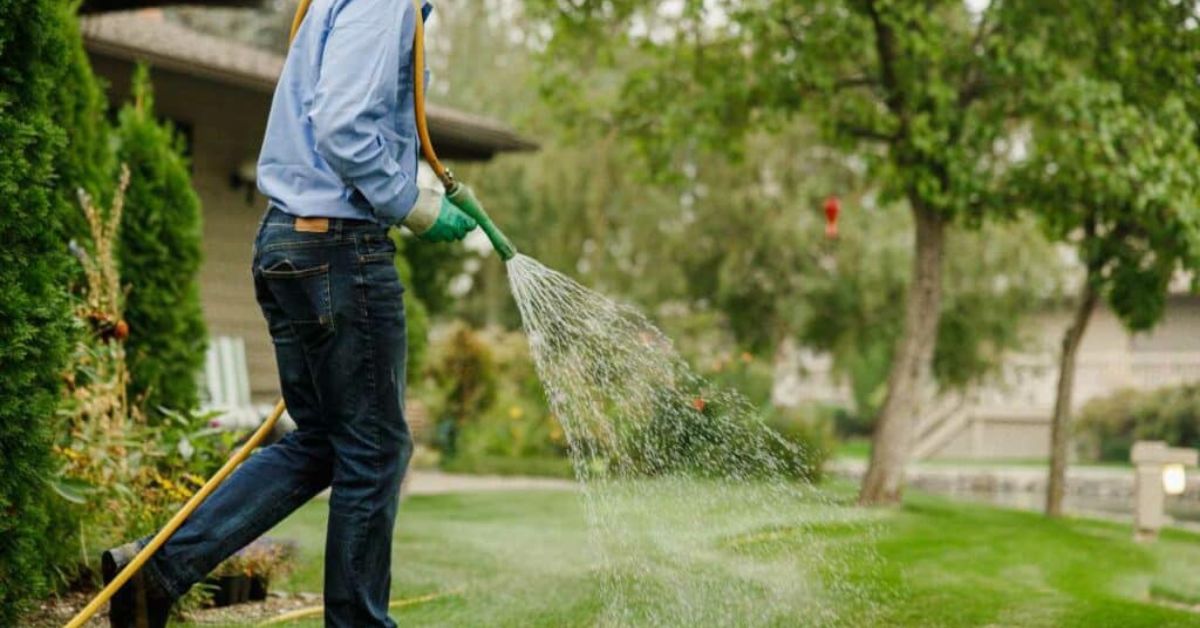
Homeowners are increasingly seeking ways to maintain lush, green yards while conserving water and lowering utility costs. Traditional watering methods often lead to waste through runoff, evaporation, or overwatering, especially during hot or dry seasons. Adopting smarter watering habits that align with changing environmental needs is essential to keeping outdoor spaces healthy and sustainable.
Modern systems make it easier to achieve efficiency without sacrificing appearance. Tools like smart timers, drip lines, and moisture sensors transform water delivery. Lawn irrigation systems that adapt to weather and soil conditions help minimize waste and ensure that grass and plants receive the right amount of hydration. These solutions support responsible water use and reduce long-term maintenance efforts, making them ideal for today’s resource-conscious homeowners.
Smart Irrigation Controllers
Smart irrigation controllers are revolutionizing lawn care and water conservation by automatically adjusting watering routines based on real-time weather data, historic patterns, and soil conditions. These controllers monitor rainfall, evaporation, temperature, and humidity to tailor watering to specific lawn needs. They can be managed remotely through smartphone apps, allowing homeowners to change settings based on climate conditions or personal preferences. Switching to smart irrigation can reduce water consumption by up to 30%.
Drip Irrigation Systems
Modern homeowners increasingly use advanced irrigation methods to maintain healthy, water-efficient lawns without excessive waste. Systems like drip irrigation target plant roots directly, reducing evaporation and runoff while ensuring consistent moisture levels. These techniques are especially effective in areas with water restrictions or hot, dry climates. Integrating such methods into landscaping plans can enhance function and appearance, supporting sustainable yard care. Smart controllers and moisture sensors can optimize water use, adjusting output based on weather or soil conditions. These innovations promote healthier lawns and gardens while conserving a critical resource, aligning with environmentally responsible home practices.
Rain Sensors
Rain sensors are essential components of modern water-saving irrigation systems. They automatically shut off watering during and after rain, preventing overwatering and protecting plants from excessive moisture that can suffocate roots and promote weeds. In areas with unpredictable rainfall, rain sensors are a practical upgrade that quickly pays for itself through reduced water bills and healthier lawns. For homeowners looking to enhance water efficiency, rain sensors are a valuable solution that extends irrigation equipment’s life by ensuring it’s only used when necessary.
Soil Moisture Sensors
Soil moisture sensors are essential for optimized irrigation. They monitor soil water content, activating your irrigation system only when necessary. Setting moisture thresholds prevents overwatering, which wastes water and can harm plant roots. Installing sensors at various depths ensures all plants receive proper hydration.
These sensors save water and promote healthier root systems, encouraging deeper growth and making plants more drought-resistant and less disease-prone. Integrating them into your irrigation strategy is a simple but effective way to enhance eco-friendly lawn care.
High-Efficiency Sprinkler Heads
Upgrading to high-efficiency sprinkler heads is a simple yet impactful way to enhance your irrigation system. These modern devices use precision nozzles and advanced spray patterns to distribute water evenly, reducing runoff and waste. Unlike conventional sprinklers, which can lose water to wind or evaporation, high-efficiency heads provide reliable coverage.
They are particularly beneficial for lawns with unique shapes or landscaping challenges, preventing patchy areas and flooding. Compatible with most existing systems, these heads offer a cost-effective solution to improve the health and appearance of your outdoor space while lowering water bills.
HOME IMPROVEMENT
Saving Time and Money with Oven, Range & Stove Repair Pro

It was just another weeknight in Manhattan when Melissa realized her oven wasn’t heating properly. With her kids hungry and a half-cooked casserole waiting, she scrambled to find an appliance repair service near me. After a quick online search, she came across Oven, Range & Stove Repair Pro and called 646-980-6968. Within hours, a technician arrived and saved dinner along with her evening.
Like Melissa, many homeowners don’t realize how much time and money they can save by working with the best professional appliance repair service in their area. Let’s explore how Oven, Range & Stove Repair Pro can help you get your kitchen back in shape without the stress or high cost.
Early Repairs Prevent Expensive Replacements
A small issue in your stove, oven, or range can turn into a major breakdown if ignored. A burner that won’t light or an oven that heats unevenly might seem manageable, but over time, these small problems can damage the appliance’s core components.
By hiring a professional appliance repair company like Oven, Range & Stove Repair Pro, you can catch problems early and avoid the cost of a full replacement. Their team of expert appliance repair technicians knows how to detect minor faults before they become serious.
This proactive approach is what makes them one of the best appliance repair service providers in Manhattan.
Fast Service That Keeps Your Routine On Track
Busy schedules don’t allow for long delays, especially when essential appliances stop working. That’s why speedy appliance technicians are essential in today’s world.
With speedy appliance technicians near me dispatched the same day you call, Oven, Range & Stove Repair Pro minimizes downtime. Whether you’re dealing with a broken range or a faulty stovetop, their team works fast without sacrificing quality.
Looking for a local appliance repair team that responds quickly? Call 646-980-6968 and get your repair done right the first time.
Professional Technicians Deliver Long-Term Value
DIY videos and budget repairmen may seem like money-saving options, but poor workmanship often leads to more damage. That’s why investing in professional appliance technicians near me is actually more affordable in the long run.
Oven, Range & Stove Repair Pro provides trained and licensed professional appliance technicians who understand all brands and models. They arrive fully equipped and ready to fix problems the right way.
This dedication to quality makes them a standout appliance repair company among others in Manhattan.
Affordable Appliance Repair That Fits Your Budget
Cost is one of the biggest concerns for homeowners facing appliance issues. Luckily, Oven, Range & Stove Repair Pro is known as an affordable appliance repair company offering top-tier service without breaking the bank.
Their pricing is upfront and fair. As an affordable appliance repair service, they provide accurate estimates, avoid unnecessary upsells, and ensure every dollar is well spent.
So if you’re looking for the best local appliance repair without inflated prices, this is the team to trust.
Specialized Experts for Ovens, Ranges, and Stoves
Not all technicians are qualified to fix cooking appliances. You need a stove repair professional who understands safety, gas lines, electronics, and heating mechanisms.
Oven, Range & Stove Repair Pro employs the best oven repair professionals, range repair professionals, and stove repair professionals near me to ensure that no matter the issue, you get specialized help.
From poor heating and broken knobs to full ignition failure, their affordable range repair professionals are trained to handle it all. If your appliance is misbehaving, don’t wait, call 646-980-6968 for expert assistance.
Local Knowledge Matters in Manhattan
Finding a repair team that knows the area is more valuable than most homeowners realize. When you hire Oven, Range & Stove Repair Pro, you’re choosing a business that understands the common appliance brands, building codes, and customer expectations in Manhattan.
As a local appliance repair expert, they bring a personal touch, fast access, and proven results. They’re not just another business, they’re your neighbors, and they treat your appliances with the same care as their own.
Long-Term Peace of Mind with the Right Partner
Working with the wrong repair company can lead to repeat visits, incomplete fixes, or voided warranties. With Oven, Range & Stove Repair Pro, you’re partnering with a team that guarantees their work and takes responsibility for delivering lasting results.
Their reputation as the best expert appliance repair team in Manhattan is backed by five-star reviews, return customers, and a track record of excellence. They’re not only a service provider, they’re a solution.
Conclusion: Save More with the Right Repair Service
When your kitchen appliances start acting up, it’s tempting to put off repairs or look for the cheapest option. But when you choose Oven, Range & Stove Repair Pro, you’re investing in speed, quality, and long-term savings.
Their commitment to timely service, expert repairs, and affordable pricing makes them the best appliance repair service in Manhattan. Whether it’s a minor glitch or a major issue, don’t wait until it’s too late.
HOME IMPROVEMENT
Rug Cleaning in Singapore: 6 Mistakes That Ruin Your Rugs

Your beautiful rugs add warmth and personality to your home, but they also face unique challenges in Singapore’s tropical climate. Many homeowners make costly mistakes when caring for their rugs, often causing more damage than the original problem they were trying to solve. Understanding these common errors helps you protect your investment and maintain your rugs’ beauty for years to come.
Why Rug Care Matters More in Singapore
Singapore’s consistently high humidity levels create the perfect environment for mould, mildew, and dust mites to thrive in your rugs. With humidity averaging over 80% year-round, your rugs absorb moisture from the air constantly, making them vulnerable to problems that don’t affect rugs in drier climates. Professional rug cleaning in Singapore becomes essential when you consider how quickly these issues can develop in our tropical environment.
1. Over-Wetting Your Rugs During Cleaning
Water seems harmless enough, but using too much water when cleaning your rugs creates serious problems. Excessive moisture seeps deep into the rug fibres and padding, where it can remain trapped for days or even weeks. This trapped moisture becomes a breeding ground for mould and mildew, which can permanently damage your rug and create health hazards for your family. When cleaning spills, use a well-wrung cloth that doesn’t drip water onto your rug.
2. Scrubbing Stains Too Aggressively
When you discover a stain on your expensive rug, your first instinct might be to scrub it vigorously until it disappears. This approach actually drives the stain deeper into the fibres while damaging the delicate rug structure. Hard scrubbing can cause your rug to look worn and frayed, especially around the areas where you’ve been working on stains. Instead, blot stains gently with a clean cloth and appropriate cleaning solution.
3. Using the Wrong Cleaning Products
Different rug materials require specific cleaning approaches, and using the wrong products can cause permanent discolouration or damage. Wool rugs need different care than synthetic materials, and natural fibre rugs react differently to cleaning chemicals than machine-made options. Research cleaning products carefully before applying them to your rug, and always test any new product on a small, hidden area first.
4. Leaving Spills Untreated for Too Long
Singapore’s humid climate means that spills and stains set much faster than they would in drier environments. What might seem minor today can become a permanent stain within 24 hours when combined with our tropical humidity. Food spills, pet accidents, and drink spillages need immediate attention to prevent them from penetrating deep into your rug fibres, where they become nearly impossible to remove completely.
5. Over-Shampooing During Deep Cleaning
Using too much shampoo or failing to rinse thoroughly after cleaning creates residue buildup that attracts more dirt over time. This residue makes your rug look dull and can cause the fibres to break down prematurely. In Singapore’s humid climate, soap residue also provides additional moisture that encourages mould growth and creates musty odours that circulate throughout your home.
6. Relying Only on DIY Cleaning Methods
While regular vacuuming and spot cleaning help maintain your rugs, they cannot address the deep-seated dirt, allergens, and moisture that accumulate in Singapore’s climate. Professional cleaning reaches areas that home cleaning cannot access, removing dust mites, bacteria, and allergens that affect your family’s health. Most homeowners wait until their rugs look visibly dirty, but by then, significant damage may have already occurred.
Professional Solutions for Singapore’s Climate Challenges
When these mistakes feel overwhelming or when your rugs need deeper care than home methods can provide, professional services offer systematic solutions designed for Singapore’s specific challenges. Be Mitey Clean understands the unique requirements of rug cleaning in Singapore and uses specialised equipment that addresses both surface stains and deep-seated moisture issues that develop in our humid climate.
Their multi-step process includes pre-inspection to identify specific cleaning needs, dust mite removal systems that target allergens, and controlled moisture extraction that prevents over-wetting problems. The company’s experience with Singapore’s tropical conditions means they understand how to clean rugs thoroughly while ensuring proper drying to prevent mould and mildew development.
Protecting Your Investment
Your rugs represent significant investments in your home’s comfort and style, and protecting them from these common mistakes ensures they continue serving your family for years to come. Regular professional rug cleaning service in Singapore, combined with proper home maintenance, addresses the unique challenges our climate presents while preserving your rugs’ beauty and extending their lifespan.
Understanding these mistakes helps you make informed decisions about rug care and recognise when professional intervention can save you from costly replacement expenses. Your rugs deserve protection from Singapore’s challenging climate, and avoiding these common errors is the first step toward maintaining their value and appearance.
-

 TECHNOLOGY2 years ago
TECHNOLOGY2 years agoElevating Game Day Eats: A Guide to Crafting Crowd-Pleasing Sliders
-

 ENTERTAINMENT2 years ago
ENTERTAINMENT2 years agowave_of_happy_: Your Ultimate Guide
-

 FASHION2 years ago
FASHION2 years agoGPMsign Fashion: Redefining Style with Purpose
-

 TECHNOLOGY1 year ago
TECHNOLOGY1 year agoTrader Joe’s Dayforce: Revolutionizing Workforce Management
-

 FOOD2 years ago
FOOD2 years agoAltador Cup Food Court Background: A Culinary Extravaganza Unveiled
-

 SPORTS2 years ago
SPORTS2 years agoScore Chaser Sporting Clays: A Thrilling Pursuit of Precision
-
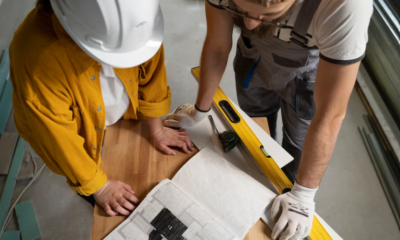
 HOME IMPROVEMENT1 year ago
HOME IMPROVEMENT1 year agoWhat Kitchen Renovation Companies Offer Beyond Basic Remodeling
-

 NEWS2 years ago
NEWS2 years agoNyl2 Kemono: Unveiling the World

